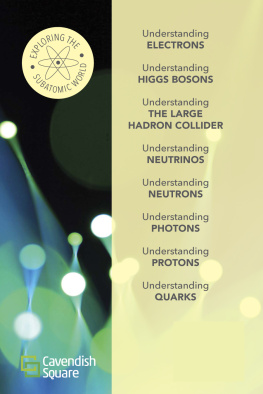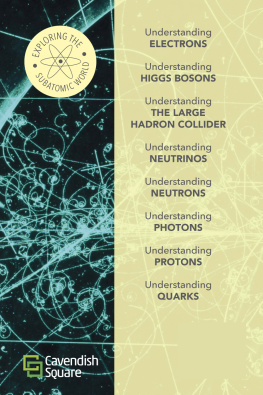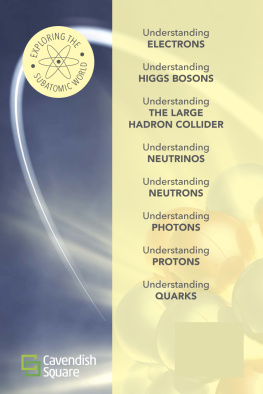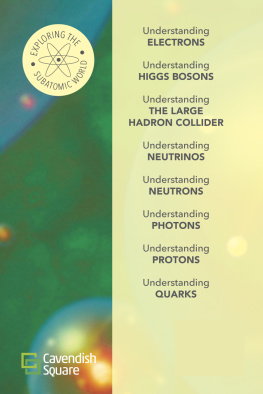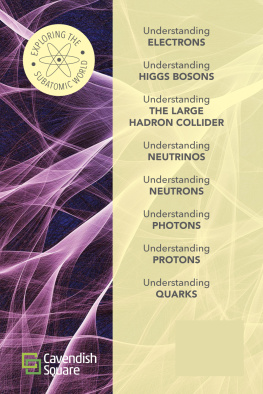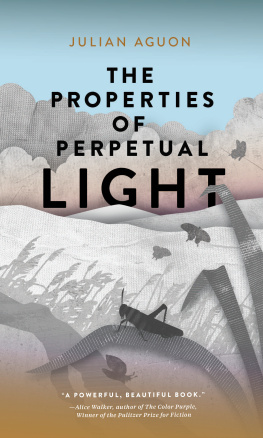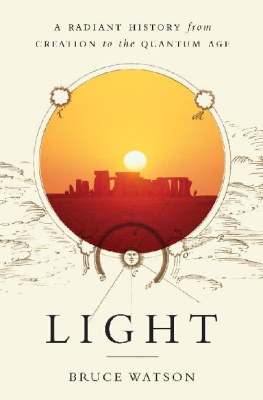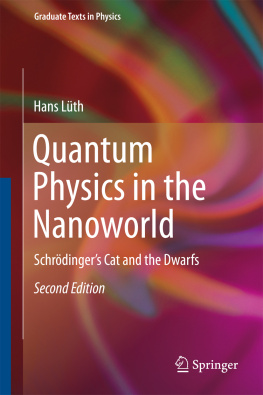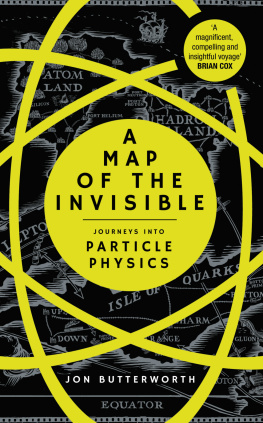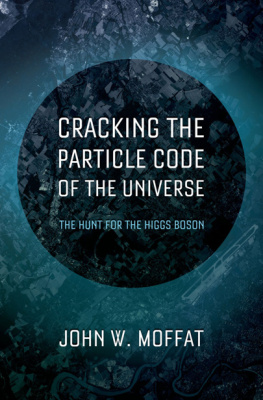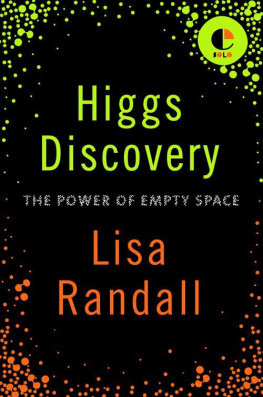B. H. Fields - Understanding Photons
Here you can read online B. H. Fields - Understanding Photons full text of the book (entire story) in english for free. Download pdf and epub, get meaning, cover and reviews about this ebook. year: 2015, publisher: Cavendish Square Publishing, LLC, genre: Art. Description of the work, (preface) as well as reviews are available. Best literature library LitArk.com created for fans of good reading and offers a wide selection of genres:
Romance novel
Science fiction
Adventure
Detective
Science
History
Home and family
Prose
Art
Politics
Computer
Non-fiction
Religion
Business
Children
Humor
Choose a favorite category and find really read worthwhile books. Enjoy immersion in the world of imagination, feel the emotions of the characters or learn something new for yourself, make an fascinating discovery.
- Book:Understanding Photons
- Author:
- Publisher:Cavendish Square Publishing, LLC
- Genre:
- Year:2015
- Rating:5 / 5
- Favourites:Add to favourites
- Your mark:
- 100
- 1
- 2
- 3
- 4
- 5
Understanding Photons: summary, description and annotation
We offer to read an annotation, description, summary or preface (depends on what the author of the book "Understanding Photons" wrote himself). If you haven't found the necessary information about the book — write in the comments, we will try to find it.
Readers will explore the history of the discovery and the properties of the photon, the particle that comprises light.
Understanding Photons — read online for free the complete book (whole text) full work
Below is the text of the book, divided by pages. System saving the place of the last page read, allows you to conveniently read the book "Understanding Photons" online for free, without having to search again every time where you left off. Put a bookmark, and you can go to the page where you finished reading at any time.
Font size:
Interval:
Bookmark:


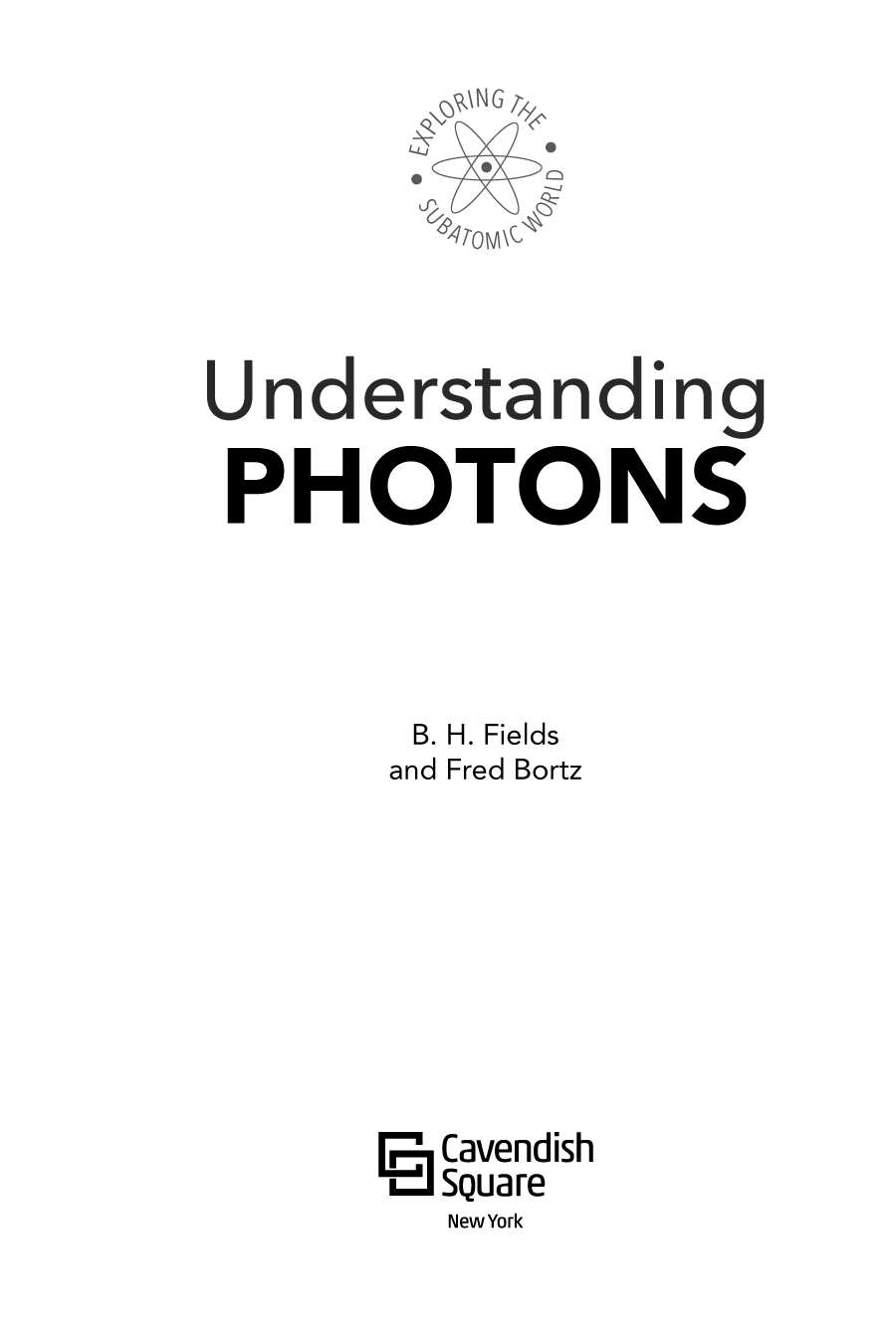
To Eliana, who can light up the world with her smile
Published in 2016 by Cavendish Square Publishing, LLC
243 5th Avenue, Suite 136, New York, NY 10016
Copyright 2016 by Cavendish Square Publishing, LLC
First Edition
No part of this publication may be reproduced, stored in a retrieval system, or transmitted in any form or by any meanselectronic, mechanical, photocopying, recording, or otherwisewithout the prior permission of the copyright owner. Request for permission should be addressed to Permissions, Cavendish Square Publishing, 243 5th Avenue, Suite 136, New York, NY 10016.
Tel (877) 980-4450; fax (877) 980-4454.
Website: cavendishsq.com
This publication represents the opinions and views of the author based on his or her personal experience, knowledge, and research. The information in this book serves as a general guide only. The author and publisher have used their best efforts in preparing this book and disclaim liability rising directly or indirectly from the use and application of this book.
CPSIA Compliance Information: Batch #WS15CSQ
All websites were available and accurate when this book was sent to press.
Library of Congress Cataloging-in-Publication Data
Fields, B. H.
Understanding photons / by B. H. Fields and Fred Bortz.
p. cm. (Exploring the subatomic world)
Includes index.
ISBN 978-1-50260-544-3 (hardcover) ISBN 978-1-50260-545-0 (ebook)
1. Photons Juvenile literature. I. Fields, B. H. II. Title.
QC793.5.P42 F48 2016
539.7217d23
Editorial Director: David McNamara
Editor: Andrew Coddington
Copy Editor: Cynthia Roby
Art Director: Jeffrey Talbot
Designer: Stephanie Flecha
Senior Production Manager: Jennifer Ryder-Talbot
Production Editor: Renni Johnson
Photo Research: J8 Media
The photographs in this book are used by permission and through the courtesy of: Pictafolio/E+/Getty Images, cover; asharkyu/Shutterstock.com, throughout; Wellcome Images (http://wellcomeimages.org), a website operated by Wellcome Trust, a global charitable foundation based in the United Kingdom/File:Sir Isaac Newton. Wellcome V0006785EL.jpg/Wikimedia Commons, 6; Thomas Forget, 7; Public Domain/ File:Christiaan Huygens, by Caspar Netscher.jpg/Wikimedia Commons, 8; Thomas Forget, 11; Public Domain/File:James Clerk Maxwell profile.jpg/Wikimedia Commons, 12; Jonathan Nackstrand/AFP/ Getty Images, 14; Hulton Archive/Getty Images, 17; Thomas Forget, 19; Public Domain File:Cavendish Experiment.png/Wikimedia Commons, 20; Thomas Forget, 22-23; Johan Hagemeyer, Bancroft Library, University of California Berkeley, courtesy AIP Emilio Segre Visual Archives, 25; Topical Press Agency/ Getty Images, 26; Public Domain/File:Niels Bohr 1935.jpg /Wikimedia Commons, 31; Thomas Forget, 32; Wellcome Images (http://wellcomeimages.org), a website operated by Wellcome Trust, a global charitable foundation based in the United Kingdom/File:Louis Victor Pierre Raymond, Duc de Broglie. Photograph by H Wellcome V0028118.jpg/Wikimedia Commons, 33; W. F. Meggers Collection/AIP Emilio Segre Visual Archives, 34; Robertson. Smithsonian Institution/File:Erwin Schrdinger profile.jpg/Wikimedia Commons, 36; Thomas Forget, 38; Friedrich Hund/File:Heisenberg, Werner 1926.jpeg/Wikimedia Commons, 40; George Frey/Getty Images, 44-45; Forestpath/Shutterstock.com, 47; File:Ernest Rutherford 1905.jpg/Wikimedia Commons, 48; The Air Force Research Laboratorys Directed Energy Directorate/ File:Lasertests.jpg/Wikimedia Commons, 50; Andrey Bayda/Shutterstock.com, 53.
Printed in the United States of America
Contents
What Is Light?
Plancks Surprise
Light and Matter
Photons and Modern Technology
I f you love science, it is probably because you love questions. And you probably love questions because they can lead to discoveries. This book is about one of the most productive questions in the history of science: What is the nature of light?
As you will discover, that question led different scientists to different conclusions. Some, like the great seventeenth-century Dutch scientist Christiaan Huygens, concluded that light was pure energy carried by waves. Disputing Huygens from across the English Channel was Englands Sir Isaac Newton, who had concluded that light was a stream of tiny particles. No one anticipated that it might be both. But, as puzzling as that seems, that is exactly what it is. This book explains how that can be. Understanding Photons is about bundles of pure energy, particles with no mass at all that always zip along at exactly the speed of light.
They werent called photons at first. In 1900, when Max Planck proposed such bundles in a formula that explained the spectrum of glowing hot matter, he called them quanta (singular, quantum). He didnt think quanta were real, but they made his mathematics work.
Five years later, Albert Einstein, in explaining a phenomenon called the photoelectric effect, became convinced that Plancks quanta actually existed. Before Einsteins work, scientists had made clear-cut distinctions between waves and particles. The discovery of the photon blurred the difference. Along with the earlier discovery of the electron and the later discovery of the nucleus, it opened the door to a new understanding of atoms and shed light on the nature of matter itself.
Thanks to those discoveries, we now know that atoms are swarming with subatomic particles. They absorb photons, produce photons, and would not stay together without photons, yet they dont contain photons in the usual sense of that word.
This book will take you on a journey inside matter and energy. You will follow the questions that led to our understanding of photons. And along the way, you will discover the remarkable technology that our understanding has made possible.
O ur planet is full of life because it is full of light. Plants use the energy of sunlight to grow, and plants provide food for animals. Humans and many animals use their sense of sight to find their way in the world.
But what is light? That simple question has driven human curiosity throughout history. No question in science has led to more discoveries. It has led not only to understanding that important form of energy, but also knowledge about the nature of matter and the forces that govern the universe.
Light and Color
Among the first to pursue that question were two seventeenth-century scientists who are considered to be among the most important of their time, or of any time: Sir Isaac Newton (16421727) and Christiaan Huygens (16291695).
At Cambridge University in England in the mid-1660s, the young Newton made some important observations about color. Until that time, the prevailing scientific view was that white light was pure, and something had to be added to produce color. Though that theory fit with common sense, Newton discovered that it was wrong.
In a darkened room with a hole in the window shade that allowed a sunbeam to enter, Newton took a piece of glass in the shape of a triangular prism and put it in the beams path. The light emerged from the prism in a different direction, and it spread out much more than it would have without the prism. More important, when the light struck the opposite wall, it was no longer white. Instead, Newton observed a band of colors from red to violet, like those of a rainbow.
Font size:
Interval:
Bookmark:
Similar books «Understanding Photons»
Look at similar books to Understanding Photons. We have selected literature similar in name and meaning in the hope of providing readers with more options to find new, interesting, not yet read works.
Discussion, reviews of the book Understanding Photons and just readers' own opinions. Leave your comments, write what you think about the work, its meaning or the main characters. Specify what exactly you liked and what you didn't like, and why you think so.

